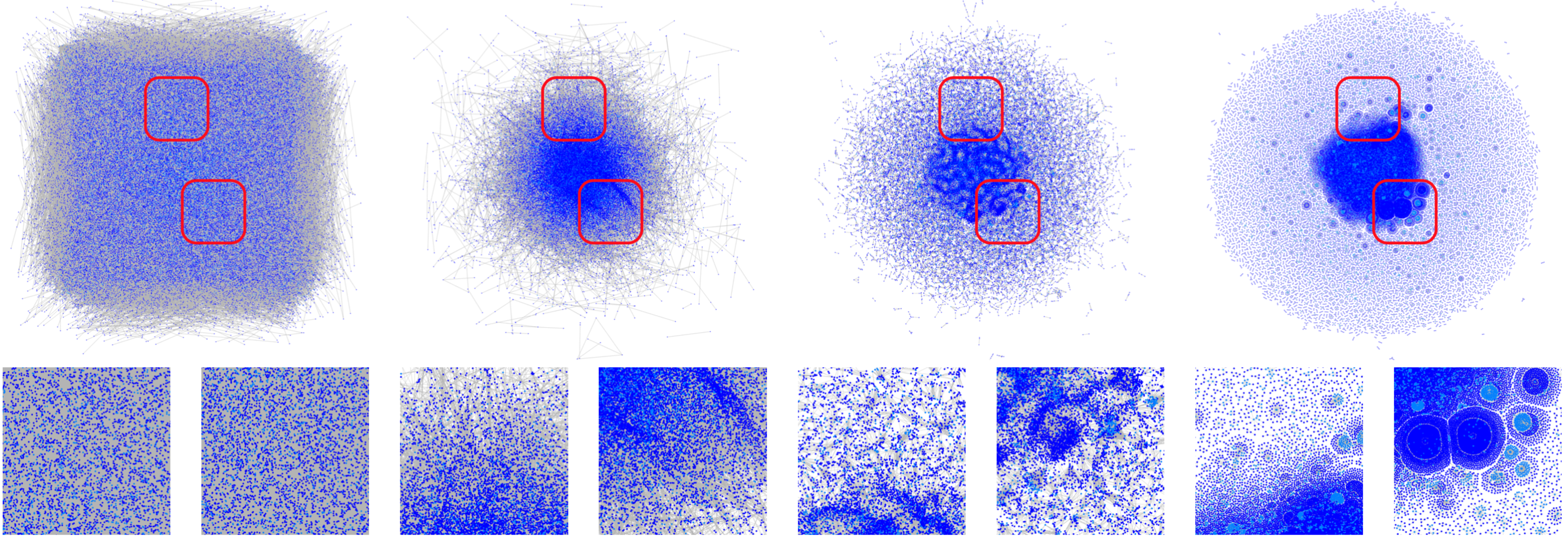Accelerating Force-Directed Graph Drawing with RT Cores
Stefan Zellmann, Martin Weier, Ingo Wald
External link (DOI)
View presentation:2020-10-28T16:00:00ZGMT-0600Change your timezone on the schedule page
2020-10-28T16:00:00Z

Fast forward
Direct link to video on YouTube: https://youtu.be/HiPVx2NgmR4
Keywords
"Spatial Data Structures", "Acceleration Data Structures", "Search Data Structures" "Info-Vis", "Graph Drawing" "Graph Drawing", "Ray Tracing Hardware"
Abstract
Graph drawing with spring embedders employs a V × V computation phase over the graph's vertex set to compute repulsive forces. Here, the efficacy of forces diminishes with distance: a vertex can effectively only influence other vertices in a certain radius around its position. Therefore, the algorithm lends itself to an implementation using search data structures to reduce the runtime complexity. NVIDIA RT cores implement hierarchical tree traversal in hardware. We show how to map the problem of finding graph layouts with force-directed methods to a ray tracing problem that can subsequently be implemented with dedicated ray tracing hardware. With that, we observe speedups of 4× to 13× over a CUDA software implementation.